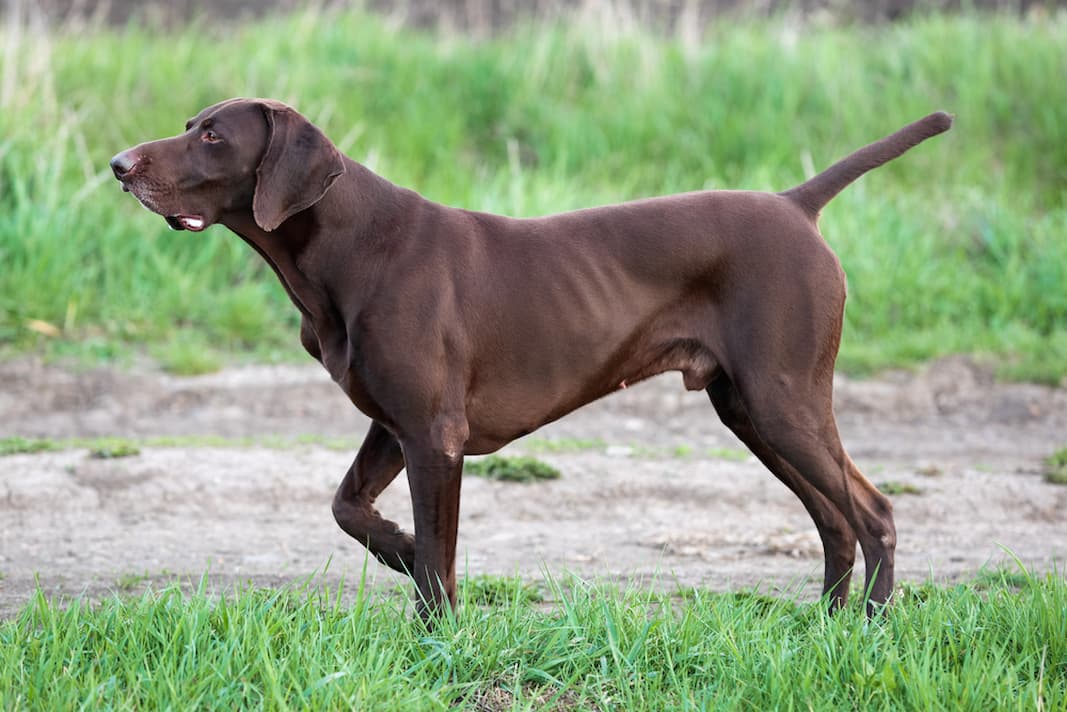Introducing Judy, the world’s only officially recognized canine prisoner of war. Born in Shanghai in 1937, this English Pointer became a symbol on one of the Japanese Navy ships during World War II. Despite surviving enemy attacks, Judy was taken as a prisoner of war to the jungles of Sumatra in 1942. Over three years, she endured diseases, hunger, thirst, and abuse from the guards. Viewed as a guardian angel by the crew members, Judy’s remarkable abilities included locating a water spring on the island, ultimately saving their lives.

Pointer
Meet the pointer, the four-legged dynamo that’s not just sporty, agile, and brainy, but also a people-loving expert in the art of hunting! Ready to bark at any doorbell daredevil, but quick to switch to a love shower the moment they step inside.
Country of Origin
Germany
Breed Group
sport
Height
Male 25-28 In
Female 23-26 In
Weight
Male 55-75 Ib
Female 45-65 Ib
Life Span
12-14 years
In a Nutshell
The pointer dog is a bundle of virtues! Brave, smart, obedient, and self-confident, this working dog learns the ropes swiftly. Despite its history in the field, it’s a perfect fit for the cozy life at home with a loving family. With a big heart and a need for human contact, this friendly canine is affectionate and excels in getting along well with children and other dogs, especially if introduced at a young age. However, the same can’t be said for our feline friends, as the pointer’s hunting instinct might make them a bit less cat-friendly. As a top-notch hunting dog, its sharp senses make it a go-to for security forces, excelling in roles like guard duty, search and rescue, and detection of explosives or drugs.
Life With a Pointer
Looks & Personality

The Pointer boasts an athletic, muscular physique wrapped in smooth, gleaming fur of a few dominant color, accented by spots on the chest and belly. Their head always stands proudly erect, while the tail energetically sways from side to side. And, before we dive in more if you were pondering the origin of their name, it’s just as you might have guessed – their role was to “point” the hunter in the direction of the prey. How did they master this art? Simply through the iconic pointed stance, marked by a raised front leg and tail, and a head tilted forward toward the prey.
The pointer is a dynamo of versatility and energy, excelling in every endeavor. With a keen hunting instinct, it’s crucial to leash up for walks, ensuring control. If your yard is fenced, a minimum height of 5 feet is advised, given the pointer’s remarkable tracking skills. Beyond its physical prowess, this breed doubles as an excellent guard dog—unfazed by strangers, territorial, and ready to go the extra mile to protect its beloved family members.
A tip from a vet
A tip from a trainer
What about your Pointer?
Did You Know

With the advent of hunting rifles, the role of the pointer evolved to require standing firmly in place until after the shot, retrieving the prey only then.

Leveraging its scent and tracking prowess, the pointer has become a standout in security roles, excelling in tasks like bomb detection and airport guarding.

Among the various variations of the breed, the English and German pointers are the most renowned.
In The News
Famous Pointer Owners
The History Behind the Breed
The roots of the pointer breed extend to the 17th century when it was originally developed as a hunting dog. While debates exist about its ancestry, speculation points to a mix including Spanish and Italian Pointers, Greyhounds, Foxhounds, Hesters, and Bulldogs. The breed’s English name conveys its purpose – to “point” towards prey, guiding hunters. Initially aiding in hunting rabbits and birds, their role shifted with the advent of shotguns, transforming them into companion dogs assisting hunters in retrieving prey. Officially recognized by the American Kennel Club in 1884, pointers gained immense popularity in the U.S. before the Civil War.
If a Pointer Could Talk…
A Quick Anatomy Lesson


The Pointer is prone to various genetic ailments, including skin conditions, nervous system defects, coagulation dysfunction, and eye degeneration leading to blindness. Unfortunately, these diseases often don't respond well to medication, and many dogs may not survive beyond a year or are euthanized due to a significant impact on their quality of life. Opting for a mixed Pointer can lower the risk of these diseases. However, if you still prefer a purebred pointer, it's crucial to connect with a reputable breeder associated with recognized organizations. Additionally, ensure that appropriate genetic tests have been conducted on the parents to eliminate the risk of these conditions.
Common Health Problems
What about your Pointer?
















